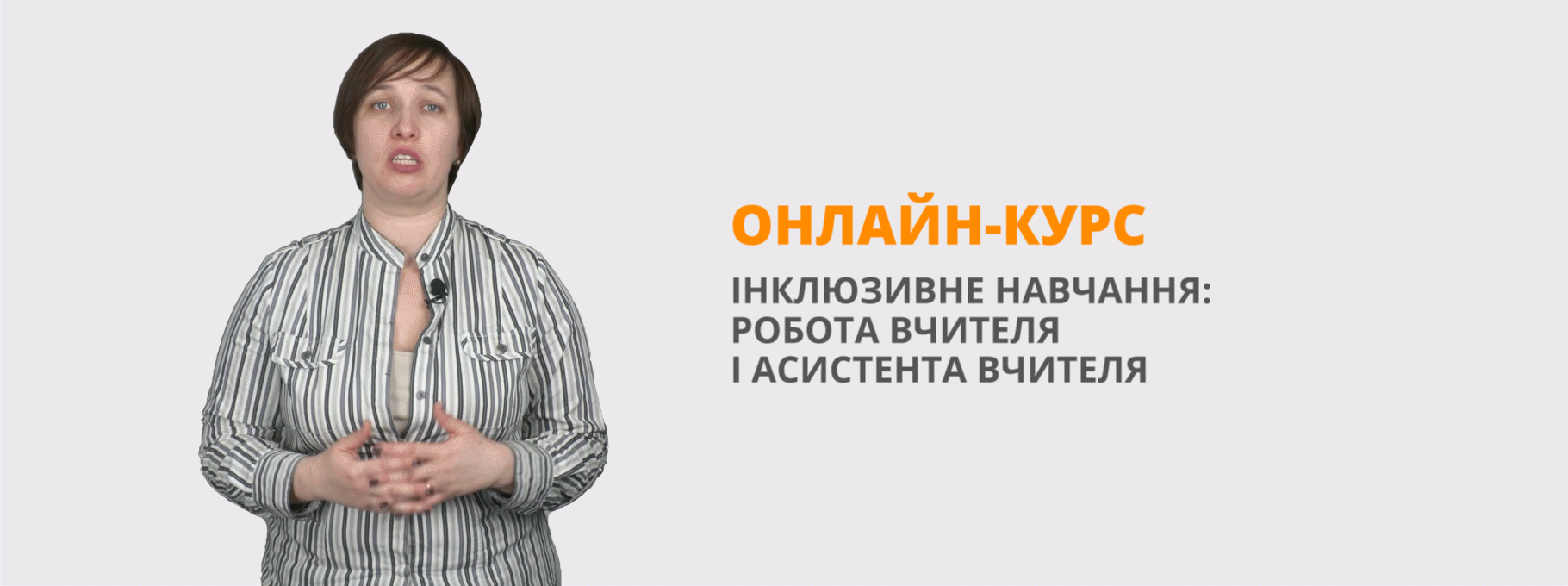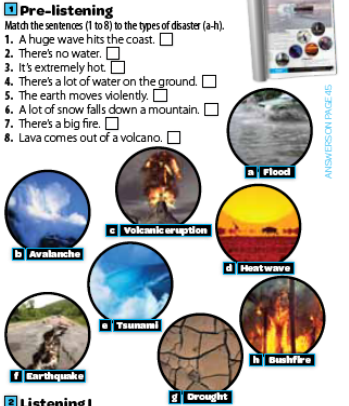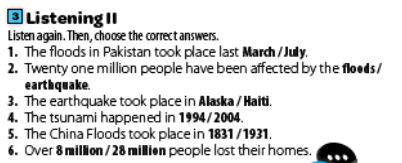Конспект уроку "Why Does It Happen?"
Міністерство освіти і науки України
Державний професійно-технічний навчальний заклад «Роменське вище професійне училище»

викладача
англійської мови
О. В. Близнюк
|
Група |
№ уроку |
Дата проведення |
|
|
|
|
Unit 6. Is the Earth In Danger?
Lesson 2 Why does it happen?
Цілі:
- методична: стимулювання іншомовного спілкування учнів шляхом створення комунікативних ситуацій, зміни учнівських ролей, активізації усних видів мовленнєвої діяльності.
- навчальна: продовжити знайомити учнів з лексикою теми, навчати використовувати нові слова і вирази у різних видах мовленнєвої діяльності; вдосконалювати лексичні навички й навички вимови, аудіювання, читання й усного мовлення;
- розвиваюча: розвивати логічне мислення, удосконалювати вміння аналізувати інформацію;
- виховна: підвищувати загальну екологічну культуру
Мовленнєвий матеріал: назви природних катаклізмів, дієслова та прикметники для опису природного катаклізму, та ін.
Граматичний матеріал: видо-часові форми дієслова, пасивний стан дієслів, безособові речення.
Обладнання: підручник, робочий зошит, роздатковий матеріал, аудіо фрагмент «Disaster Dash», презентація, ноутбук, проектор.
Тип уроку: урок активізації лексичного та граматичного матеріалу
Схематичний план уроку
- Початок уроку. Організація класу. Перевірка готовності учнів до уроку. Повідомлення цілей уроку (2 хв.)
- Мовленнєва зарядка. Повторення назв природних катаклізмів (робота з презентацією). Перевірка виконання домашнього завдання (5 хв.)
- Аналіз та групування вивчених ЛО (за матеріалом підручника); виконання вправи 2, с. 97 у міні-групах (4 хв.).
- Практика усного мовлення за запитаннями (читання, побудова логічних пар «питання-відповідь», робота в парах, робота зі словником) (5 хв.)
- Активізація лексичного та граматичного матеріалу на письмі. Виконання вправи з робочого зошита (8 хв.)
- Практика аудіювання " Disaster Dash" з розумінням основного змісту (13хв.)
- Підведення підсумків уроку, підведення учнів до теми наступного уроку. Побудова речень за поданим початком (3 хв. )
- Мотивація оцінок (2 хв.).
- Пояснення домашнього завдання (3 хв.)
|
Procedure |
Хід уроку |
|
I. Introduction Hello, boys. At today’s lesson we will speak about natural disasters again. As you see we have guests. But don’t be nervous, it doesn’t look like having a disaster. So, are you ready? Do you have everything for you fruitful work? OK. Let’s start. At the lesson we are going to: speak in created communicative situations; use topical vocabulary in different activities; improve reading and listening skills. I’ll try to: develop your critical thinking and analytical skills; increase your ecological awareness. |
І. Організаційний момент. - перевірка присутності учнів на уроці, їх забезпечення навчальними матеріалами; - повідомлення теми та мети уроку (слайд 1-2)
|
|
1. Warming-up |
Введення в іншомовну атмосферу. |
|
At home you were supposed to learn some new words. Look at the screen and name the natural disaster (слайди 3-14). |
Назвіть природний катаклізм за фото (слайди 3-14). |
|
Let’s check your home exercise 5, p. 95 What is a tornado/hailstorm/avalanche/landslide /hurricane/drought/heat wave/blizzard/ wildfire? |
Перевірка виконання домашнього завдання вправи 5, с. 95. Поясніть, що таке торнадо/град/лавина/зсув грунту/засуха/ Аномальна спека/сніжна буря/лісова пожежа/. |
|
2. Improving reading and analytical skills. Now I need your analytical skills. There are several disasters in exercise 2 on page 97. Some of them are connected with land, some with water and the rest with weather. Let’s divide them into different columns. We have 3 mini-groups for each column. |
2. Удосконалення навичок читання та розвиток аналітичних умінь. Лексичні одиниці вправи 2 на сторінці 97 слід розділити на три колонки, віднісши їх до катаклізмів, що відбуваються на суші, на воді і в результаті погодних змін. Група ділиться на міні-групи, учні кожної групи заповнюють одну з колонок таблиці. |
|
4. Writing. I’m sure it will be easy for you to use active vocabulary in writing. You should do the task from your workbook individually. Do ex. 1, p. 57 (workbook). |
4. Активізація лексичного та граматичного матеріалу в писемному мовленні. Самостійне виконання письмової вправи з робочого зошита на вживання активних лексичних одиниць. |

|
5. Writing. Will you be so kind to help me? I have a text with jumbled sentences and questions which will help you to put them in logical order. You are to work in pairs. Read the paragraphs (A-F) and refer them to the questions (1-6). (слайд 15) |
5. Усне мовлення. Робота в парах (слайд 15). Учні читають запитання і можливі відповіді на них. Працюють і відповідають у парах, відновлюючи логічну послідовність розповіді за реченнями з другої колонки. |
Table 1.
|
1. What are they? 2. Why do they happen? 3. What is the difference between hurricanes and tornadoes? 4. Where do they happen? 5. How do they affect people? 6. What can people do?
|
A. Over the warm parts of oceans. Tornadoes are common in parts of the USA, Australia and Japan. B. The water evaporates from the warm sea. This condenses in the atmosphere. More and more hot, wet air rises up. It becomes a strong wind. C. Scientists can usually track hurricanes, but they cannot stop them. D. Tropical storms with strong winds. They start at sea, and can travel a long distance. They have different names in different places: 'hurricanes' in the Atlantic Ocean, 'typhoons' in the Pacific Ocean, 'tropical cyclones' in the Indian Ocean and around Australasia. E. Tornadoes or whirlwinds, are similar, but begin over land. F. They can affect ships, blow down houses, cause floods and disrupt traffic. |
|
6. Listening (Disaster Dash). Listen to the text and do the tasks. You are going to listen to audio and do some tasks. Disaster Dash. Some of the world’s worst disasters. |
6. Практика аудіювання. Виконання лексичних вправ до, під час та після прослуховування аудіо фрагмента. Передпрослуховування. Поєднайте речення з типами катаклізмів (слайд 16). |
|
|
|
|
|
Перше прослуховування. Послухайте розмову двох людей про природні лиха. Які стихійні біди із зображених згадані в діалозі? |
|
|
Tapescript. A: Hi, Harry. Reading magazine as usual? H: Yes. I never get the time to read the news normally. I have a quick look at the news online and I buy the “National Geographic every month”. Their articles are great. A: So, what are you reading about now? H: The flood in Pakistan last July, terrible. Did you know that the United Nation think 21 million people may have been affected by the floods? You know homeless or injured. A: 21 million. Wow! That’s appalling! H: Yeh. Unbelievable. At one point 20% of Pakistan was underwater. 20%! A:That’s awful! H: Too right. The UN is trying to raise $460 million to help. Millions of people are homeless and have no clean water to drink. A: Poor Pakistan. So was this the worst natural disaster ever? H: No, no. Although 21 million people have been affected by the floods not too many have died thankfully. A: You mean there have been worse once? H: There was the earthquake in Haiti last January. That was pretty bad. A: Oh, yes. I remember that. How many people died? H: About 230 thousand. A: Terrible. H: And what about a tsunami in 2004. That killed more than 230 thousand people. A: Where was that? H: In Asia. A: Oh, yes. I saw it on TV. It happened on the 26 of December. Boxing Day. H: That’s right. I remember that too. A: So was the tsunami the worst disaster ever? H: No, no. Actually there is a list of the worst disasters in the magazine. A: Where did they take place? H: Well, 5 of the 10 worst disasters have taken place in China. 5 out of 10. A: Wow! What were they? H: The Highwan earthquake, the Tangshan earthquake, the Shansi earthquake, the Yellow river flood and the China floods. A: Tell me about them. H: Well, the most serious were the China floods. A: When did they take place? H: 1931. A: What happened? H: The floods were in the centre of China. After a long draught it snowed and rained very-very heavily for a few months. 7 cyclones hit the area in July, 7 big storms. The Yangtze river flooded, and the Yellow river and the Hwai river too. A: And what happened? H: Well, over 28 million people lost their homes, and as many as 4 million people died. A: Wow! That’s terrible. H: Yeh. And of course in 1931 the emergency services weren’t so good so lots more people suffered. The disaster lasted for many years too, because there was also a civil war going on. A: Well, at least some things have gone better since then. The world is helping Pakistan for example. H: That’s true. A: Hey, can I borrow the magazine when you’ve finished with it? I’d like to read the article. H: Sure. Here you are. You can have it now. A: Great thanks. |
||
|
|
Друге прослуховування. Прослухайте аудіо запис ще раз і виберіть правильний варіант доповнення речення (слайд 17). |
|
|
7. Summary. Natural disasters are really terrible. But can we prevent the worst of them? Share your ideas. Use the table to start.
To avoid natural disasters we can… To have less damages we have to… To make a disaster less destructive we should… To save our lives we must … To prevent manmade disasters we are ready to…
|
7. Підведення підсумків уроку. Природні катаклізми жахливі. Але чи можна запобігти їм. Висловіть свою думку, починаючи фразами (слайд 18) |
|
8. Assessment. Those working hard always get good marks. So I am ready to give … |
8. Виставлення та аргументація оцінок.
|
|
9. Homework (слайд 19).
|
9. Пояснення домашнього завдання. Впр. 3, с. 97, доповнити текст *Впр. 2, с. 57 (робочий зошит), скласти 5-7 речень. |


про публікацію авторської розробки
Додати розробку



